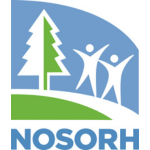If rural veterans are going to get more access to good care, there must be more collaboration between the Veterans Administration and non-VA providers, according to Gloria Vermie, Director of the Iowa State Office of Rural Health (IA SORH). To aid in that effort, Vermie has worked to develop a collaborative relationship between her Office and the Veterans Rural Health Resource Center-Central Region, (VRHRC-CR) located in Iowa City.
“Maybe because my dad was a veteran, it has kept it upfront for me,” Vermie said. When the Iowa City VA got a grant from the Veterans Health Administration’s (VHA) Office of Rural Health to be a resource center for the central region of the United States, Vermie contacted them. “I spent some time talking with them about rural health care in Iowa and about Critical Access Hospitals. I put them on my distribution list, and they invited me to meetings.” Since then, Vermie has been to meetings where she was one of the few non-VA people in attendance, and where she has served as a guest panelist speaking about rural Iowa.
The result of the collaboration, Vermie said, is that the SORH has a better understanding of VA resources, and the VA has a better understanding of rural Iowa and non-VA resources, as well as the barriers rural veterans may face in getting the care they need. For example, Vermie said, “if a veteran goes to a rural hospital and not a VA hospital, the rural hospital may not get paid. Also if an ER physician calls the VA for medical records on a veteran that has just come in, they can’t always get those records.”
The Co-Managed Care Toolkit, developed by the VRHRC-CR, helps to address such communication issues. The toolkit provides a set of resources and tools to help non-VA providers navigate the VA system when they have a patient who is seeing both a VA provider and a non-VA provider. Vermie recommends that CAHs and RHCs download the toolkit and put it in a binder. “I wish I could get it to all of them right now,” she said. The toolkit is for all non-VA providers, whether in the Central Region or not.
Additionally, the IA SORH has been involved and has supported VRHRC-sponsored trainings and community resource fairs, veterans’ foster care and mental health initiatives. “When they contacted me and said they were sponsoring a community resource fair on non-VA resources in the community, I recommended they provide information on dental care for children, including the I-Smile program,” Vermie said. To help the VA get the word out about the VA’s Medical Foster Homes program, the IA-SORH office has hosted webinars about it.
“Not all SORHs are involved with the VA—yet every state has veterans,” Vermie said. “I sensed there was a huge chasm that needed to be crossed between VA and non-VA providers tobetter coordinate our programs. I think the VA is doing huge things, trying to bridge a big divide. The relationship that the IA SORH has had with the VRHRC-CR has resulted in both groups continuing to move forward. I think it has been enlightening for them and us.
